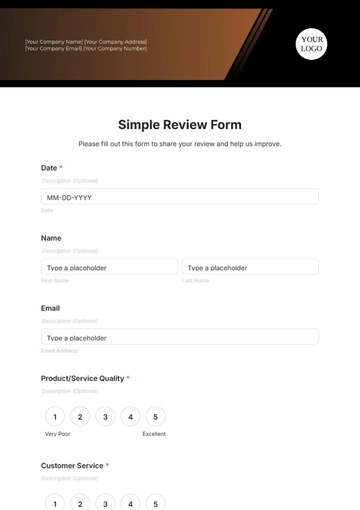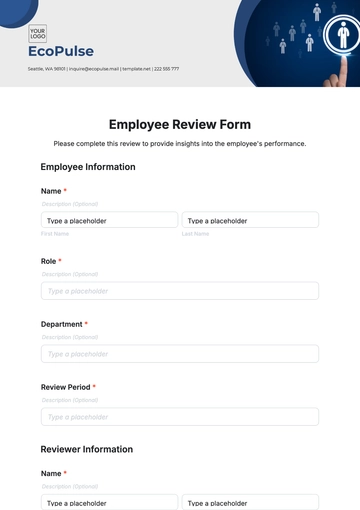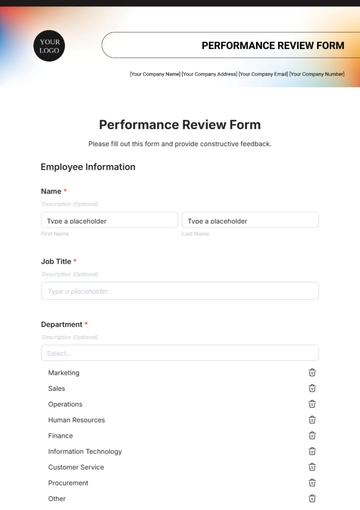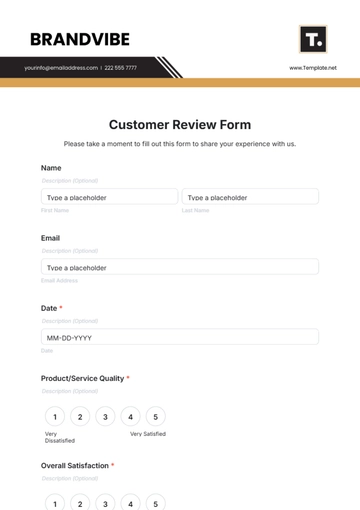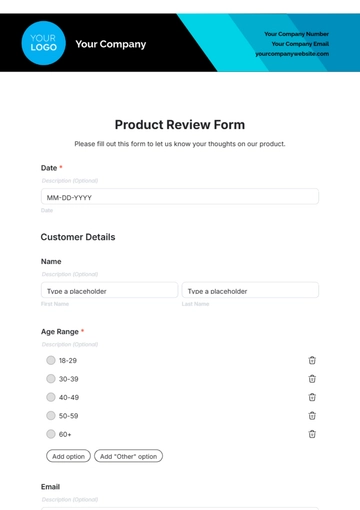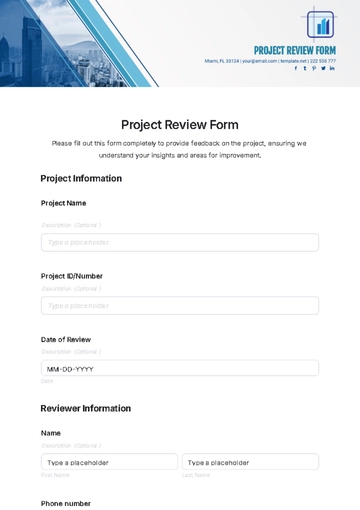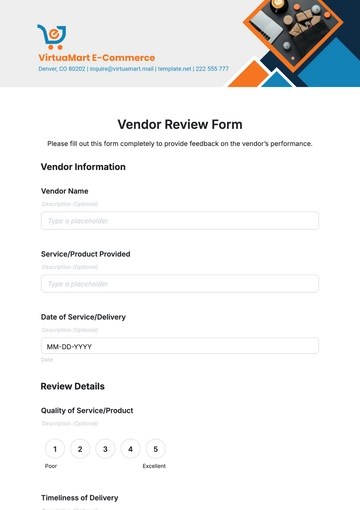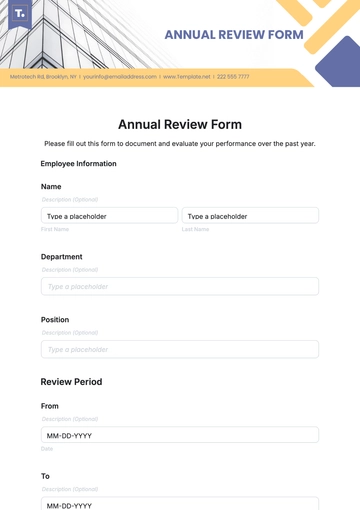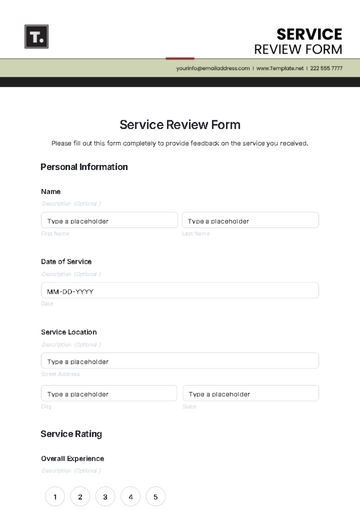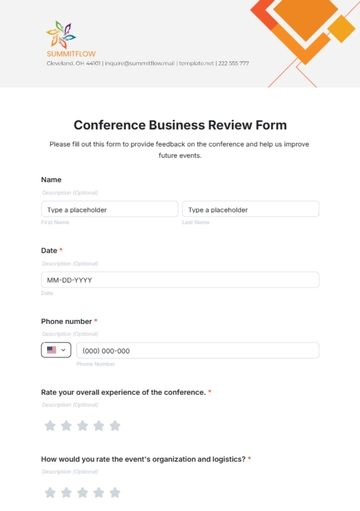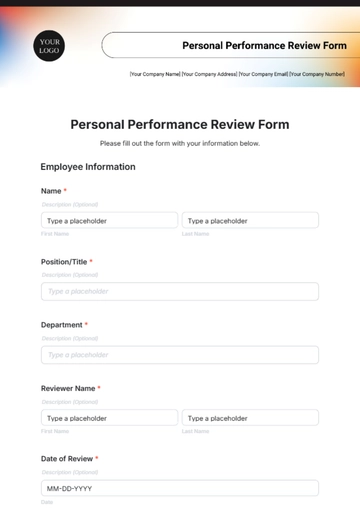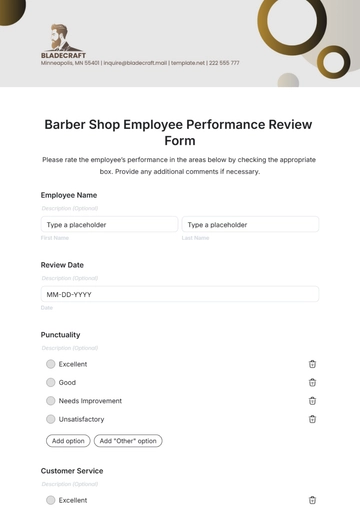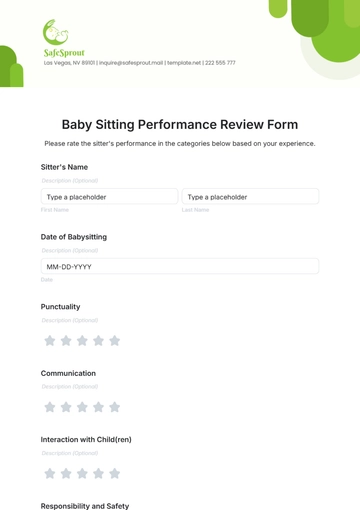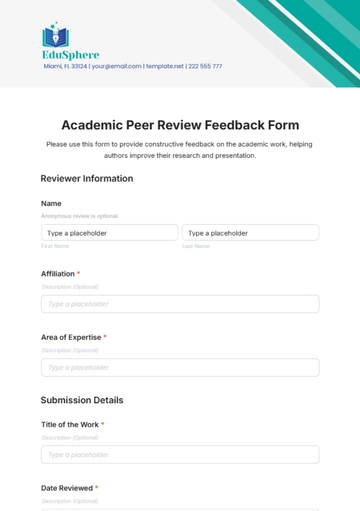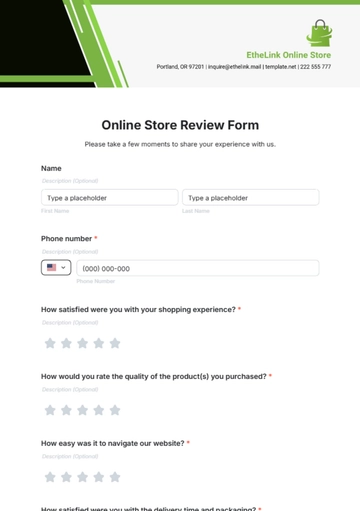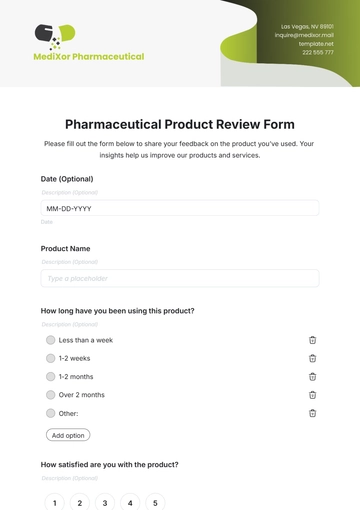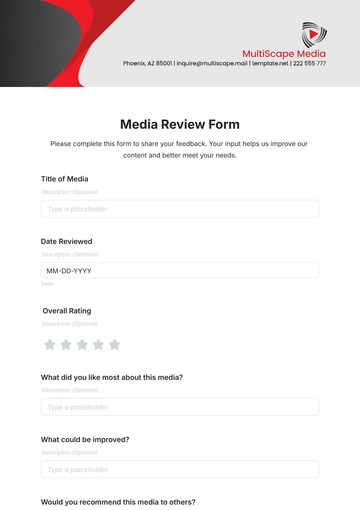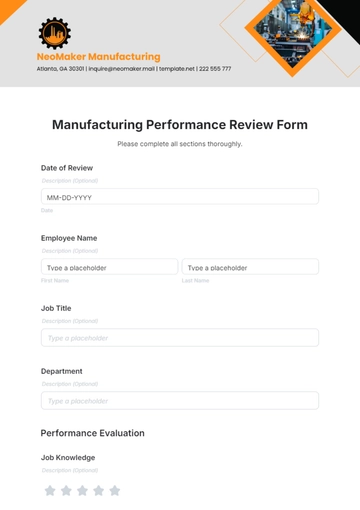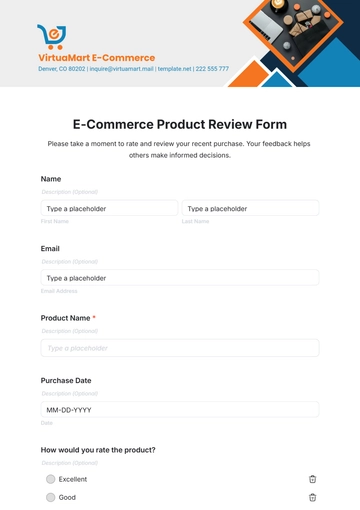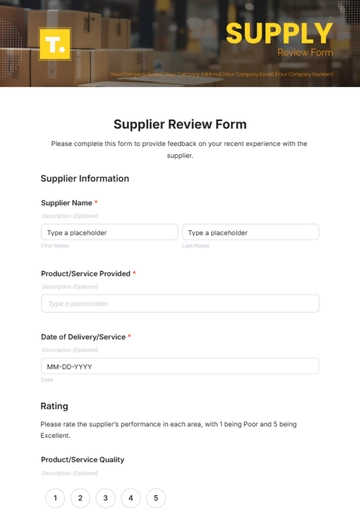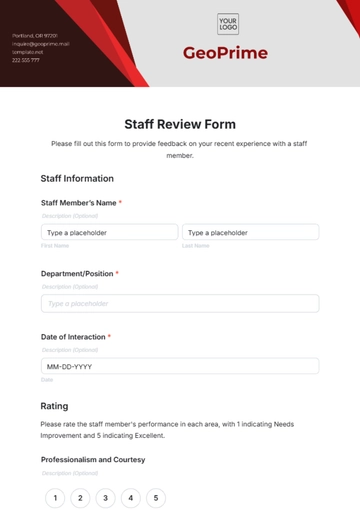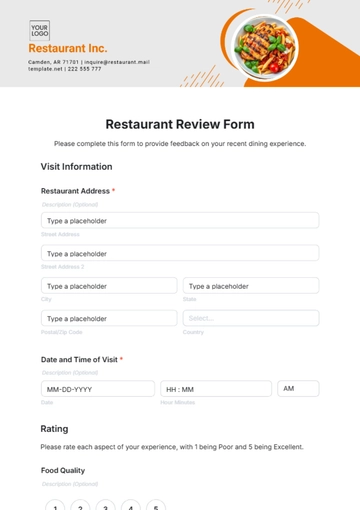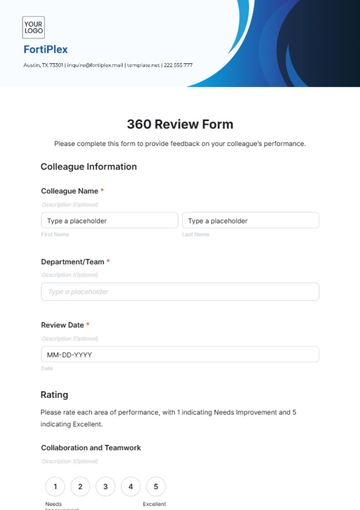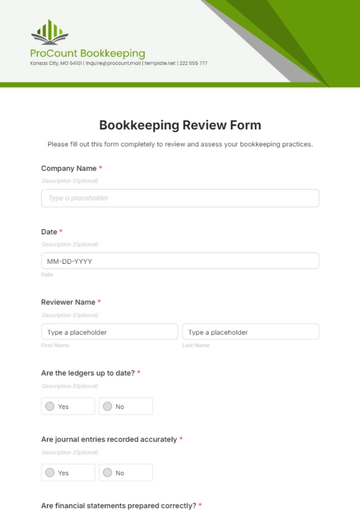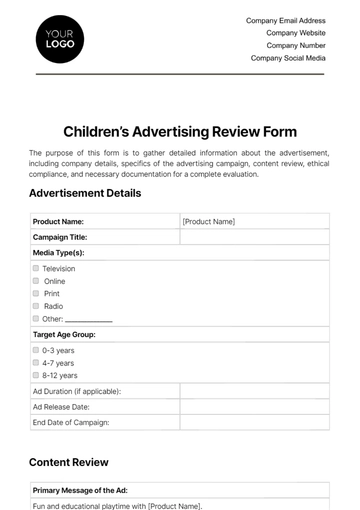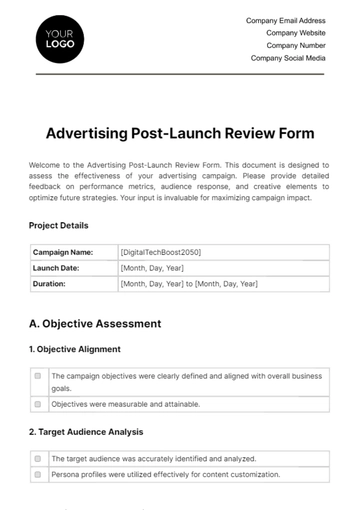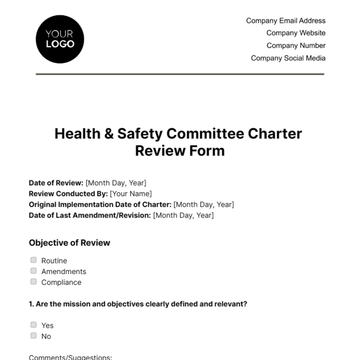Free Legal Corporate Policy Review Form

This Legal Corporate Policy Review Form serves as a vital tool for evaluating and enhancing our company's policies. To efficiently complete it, carefully assess policy effectiveness, compliance, and relevance, propose necessary changes, and ensure alignment with organizational values and legal requirements.
Policy Information
This section captures essential details of the policy under review. Please provide accurate information regarding policy title, implementation date, owner, purpose, legal references, and key stakeholders.
Policy Title: | Employee Code of Conduct |
|---|---|
Date Implemented: | [Month Day, Year] |
Policy Owner/Department: | Human Resources Department |
Purpose/Objective: | To establish guidelines for expected behavior and ethical standards for all employees. |
Legal References: | Employment Law, Company Policies and Procedures Manual |
Key Stakeholders: | HR Department, Legal Counsel, Senior Management |
Review Details
Here, record specifics about the policy review process. Include the date of the last review, frequency, reviewers' names and positions, and the methodology utilized for the review.
Date of Last Review: | [Month Day, Year] |
|---|---|
Frequency of Review: | Annually |
Reviewer(s): | [Your Name], Legal Counsel |
Review Methodology: | Examination of policy document, consultations with HR and management. |
Policy Assessment
Assess the policy's effectiveness, compliance, relevance, clarity, consistency with values, and identification of risks. Provide a comprehensive evaluation for each assessment area.
Assessment Area | Evaluation |
|---|---|
Policy Effectiveness | The Employee Code of Conduct has been effective in promoting adherence to ethical standards and maintaining a positive workplace culture. |
Compliance with Laws | The policy is compliant with relevant employment laws and regulations, including anti-discrimination, harassment, and privacy laws. |
Relevance and Appropriateness | The policy remains relevant and appropriate, considering changes in the business environment and organizational needs. |
Clarity and Accessibility | The policy is clear and accessible to employees through the company intranet and employee handbook. It utilizes plain language and provides examples. |
Consistency with Values | The policy aligns with the company's values of integrity, respect, and professionalism, fostering a culture of accountability and trust. |
Identification of Risks | No significant legal, operational, or reputational risks have been identified related to the policy. Ongoing monitoring and feedback mechanisms are in place. |
Proposed Changes/Recommendations
Propose any necessary changes to the policy, explaining the rationale behind each. Assess potential impacts and outline a timeline for implementation. Obtain approvals as required.
Summary of Proposed Changes
Update language to reflect current best practices and terminology, ensuring clarity and relevance.
Clarify reporting procedures for violations of the code of conduct, including whistleblower protection mechanisms.
Include specific examples of prohibited behaviors to guide employees in understanding expectations.
Rationale for Changes
Enhance the effectiveness of the policy in addressing misconduct and preventing workplace conflicts.
Improve transparency and accountability by providing clear guidance on reporting and resolution processes.
Align with industry standards and regulatory requirements to mitigate legal and compliance risks.
Impact Assessment
Minimal disruption anticipated to day-to-day operations due to the incremental nature of proposed changes.
Enhanced understanding and adherence to the code of conduct expected among employees, leading to a stronger ethical culture.
Timeline for Implementation
Draft proposed changes by [Month Day, Year], with input from HR, Legal, and relevant stakeholders.
Circulate for feedback and approval by [Month Day, Year], ensuring buy-in from all key stakeholders.
Implement updated policy by [Month Day, Year], accompanied by targeted training sessions and communication initiatives.
Approval Process
HR Department to lead the review and finalization of proposed changes, with input from Legal and Senior Management.
Approval required from Senior Management and Legal Counsel to ensure alignment with strategic objectives and legal requirements.
Conclusion
Overall Assessment
|
Recommendations
|
Signatures
Reviewer:

[Month Day, Year]
Approver:

[Month Day, Year]
[Signature]
- 100% Customizable, free editor
- Access 1 Million+ Templates, photo’s & graphics
- Download or share as a template
- Click and replace photos, graphics, text, backgrounds
- Resize, crop, AI write & more
- Access advanced editor
Discover efficiency with the Legal Corporate Policy Review Form Template from Template.net. This editable and customizable template streamlines policy evaluation. With a user-friendly interface and AI Editor Tool, effortlessly update policy details, conduct thorough assessments, propose changes, and obtain approvals. Elevate your corporate governance process with this dynamic template, available at Template.net.
